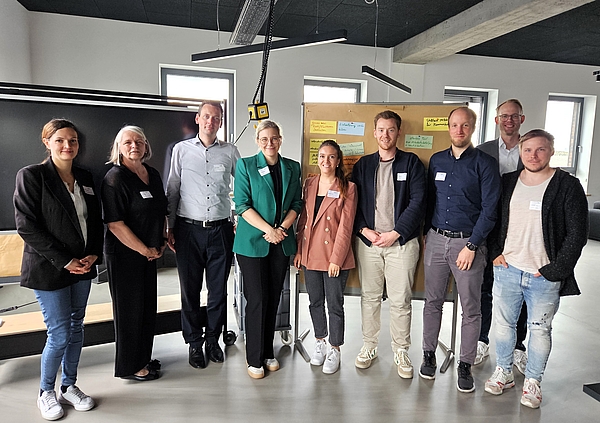The notice board is a thing of the past. Many processes and work steps in working life are becoming more digital. As a result, traditional internal corporate communication has also changed and is increasingly using digital channels. Communication apps have become almost indispensable for private purposes. But what does the introduction and use of an app for employees look like in the day-to-day business of companies? On June 6, 2024, HR, marketing and digital managers from our member companies met to take a closer look at the topic of apps for employees. As a tool for internal corporate communication that is mostly used on the move, apps can offer many advantages with their digital services, functions and communication options in HR and marketing. As an introduction to the topic, there were two impulses from member companies that have already implemented an app. Christine Bartel from HR Development and Mona Berretta from Marketing at Zapp Systems GmbH presented how the Staffbase app was introduced at Zapp, what functions it covers and how it is used. The Murtfeldt Group recently introduced the HiBob app and Dominik Briest from Talent and Cultural Development gave an insight into how the app is used in his company and how the introduction was implemented.
Each presentation was followed by a detailed Q&A session and several aspects were discussed that should be carefully considered in advance.
First and foremost is certainly the clear definition of objectives and the distribution of responsibilities. What information and communication options should the app provide and what services can it support in HR processes? Will the app be used exclusively for communication or should it also be used to submit vacation requests or document meetings? Is only one channel intended to provide information to everyone or should employees also be able to communicate with each other? As a first step, companies must individually define which goals are to be achieved with the app and which drivers in the company are to initiate its implementation.
In addition, there is the clear organizational anchoring: Who compiles the content for the app editorially? Who has an eye on the HR processes? To what extent is marketing involved? An important aspect in this context is that there may need to be a company agreement for the use of the app. Does the company allow the use of private cell phones? What about data protection and usage guidelines, based on a possible social media guideline – if one already exists? The works council should play an active role here, if one exists.
Last but not least, a detailed schedule for the introduction of the app is necessary. In addition to scheduling the development and test phase and the online launch at the main location, consideration should be given to how and when other international locations (with corresponding language versions) should be integrated.
An app is not used automatically. All employees must be informed about the introduction of the app and also convinced to use it.
The initiators had many creative and motivating examples of good practice at the ready.
One advantage that speaks in favour of introducing an app at second glance: in the event that a company is hacked and the traditional communication channels cannot be used, an app can at least ensure basic communication independently and detached from the main IT systems.
The discussion in the group brought up even more questions and ideas. The topic of apps for employees will certainly remain topical in our network in the future. We would like to take this opportunity to thank our initiators, who shared their experiences with the group and ensured an informative and inspiring afternoon workshop with a few “aha” moments.
